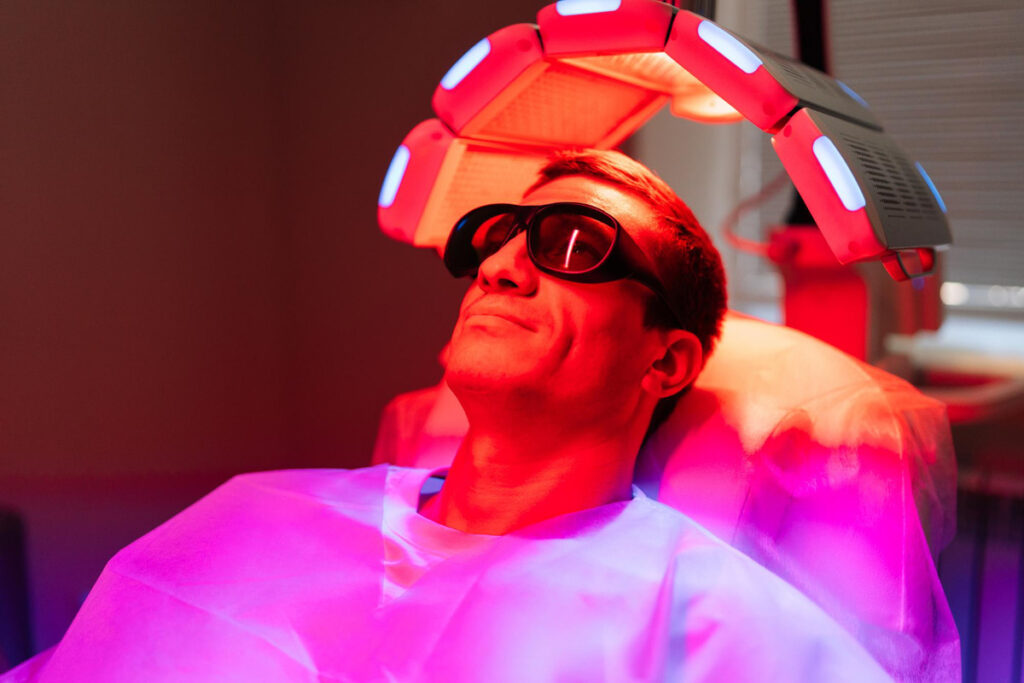Red light therapy has gained attention in recent years as a potential treatment for various health conditions, including tinnitus.
This article explores how red light therapy works and whether it can help alleviate the symptoms of tinnitus, offering a natural approach to ear health.
Red Light Therapy for Tinnitus: How It Works
Red light therapy involves the use of low-level lasers or LEDs that emit specific wavelengths of light.
The therapy is designed to penetrate the skin and reach deeper tissues, stimulating the cells to improve circulation, reduce inflammation, and promote healing.
For tinnitus, the therapy is believed to help by increasing blood flow to the inner ear and reducing the inflammation that might be contributing to the ringing sensation.
It is a non-invasive treatment that can be administered through handheld devices or in clinical settings.
The Science Behind Red Light Therapy
Red light therapy works by using specific wavelengths of light, typically between 600 and 1,000 nanometers, that are absorbed by the skin and tissues.
When light is absorbed, it can stimulate mitochondria, the powerhouse of the cells, to produce more ATP (adenosine triphosphate).
This increase in ATP helps to enhance cellular repair and regeneration, which can aid in reducing inflammation and promoting healing in tissues that might be damaged by prolonged exposure to loud sounds, a common cause of tinnitus.
In the case of tinnitus, the therapy may also improve blood flow to the inner ear, helping to restore optimal function to the auditory system and reduce the ringing sensation.
Can Red Light Therapy Help with Tinnitus?
There is ongoing research into the effectiveness of red light therapy for tinnitus, with some studies suggesting positive results.
A study conducted by researchers at the University of Auckland found that red light therapy helped reduce tinnitus symptoms in participants, particularly those with noise-induced tinnitus.
Another study published in the National Library of Medicine explored the potential of low-level laser therapy (LLLT) as a treatment for tinnitus.
While the study concluded that LLLT could be a promising alternative treatment for idiopathic and refractory tinnitus, it emphasized the need for further investigation into the long-term effects and optimal treatment protocols.
Benefits of Red Light Therapy for Tinnitus Relief
Red light therapy offers several potential benefits for tinnitus sufferers:
- Non-invasive: Red light therapy is non-surgical and pain-free, making it an attractive option for individuals who prefer natural treatments.
- Safe: It is generally considered safe when used as directed and has minimal side effects.
- Improves circulation: By promoting blood flow to the inner ear, red light therapy may help to nourish damaged cells and tissues, potentially reducing the ringing sensation.
- Can be used in conjunction with other treatments: Many people use red light therapy alongside other tinnitus treatments, such as sound therapy or cognitive behavioral therapy (CBT), to achieve better results.
Other Treatments for Tinnitus to Consider
While red light therapy holds promise, there are other treatment options available for tinnitus relief:
- Sound therapy: This involves using external sounds to mask the ringing or buzzing sensations associated with tinnitus.
- Cognitive Behavioral Therapy (CBT): CBT helps individuals manage the emotional impact of tinnitus and develop coping strategies.
- Medications: Certain medications, such as antidepressants or antianxiety drugs, may help reduce tinnitus symptoms in some individuals.
- Tinnitus retraining therapy (TRT): This approach uses sound therapy combined with counseling to help individuals habituate to tinnitus sounds.
Each of these treatments can be used individually or in combination, depending on the severity and cause of the tinnitus.
Precautions and Considerations
While red light therapy is generally safe, it’s important to consider certain precautions:
- Consult with a healthcare provider: If you have underlying health conditions or are using other treatments for tinnitus, consult with a healthcare professional before starting red light therapy.
- Avoid prolonged exposure: While red light therapy is safe, excessive or prolonged exposure to light therapy may lead to discomfort or skin irritation.
- Not a cure: Red light therapy may help alleviate tinnitus symptoms, but it is not a cure.
If you experience any side effects, such as discomfort or increased tinnitus symptoms, discontinue use and consult with a healthcare provider.
Natural Supplements for Tinnitus Relief
In addition to red light therapy, there are natural supplements designed to support ear health and reduce tinnitus symptoms.
Sonus Complete is one such supplement, formulated to help alleviate tinnitus and improve overall ear function.
Sonus Complete contains a blend of natural ingredients, including ginkgo biloba, hawthorn berry, and vitamin B12, which support circulation and protect nerve health.
These ingredients may help reduce the ringing sensation in the ears and support auditory function by improving blood flow and reducing inflammation.
Incorporating Sonus Complete into your routine, along with red light therapy, may offer additional benefits for those struggling with tinnitus.
Red light therapy offers a promising natural option for those seeking relief from tinnitus.
For those experiencing persistent symptoms, combining therapies like red light therapy and supplements like Sonus Complete may offer additional benefits.
Learn more about Sonus Complete and how it can help you find relief from tinnitus by visiting the official website.









